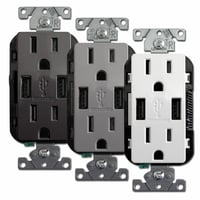In light of the current COVID-19 pandemic, many are making the adjustment to working from home....
Adapt a Space in Your Home for Safe Quarantining
 While we may have thought we’d be finished with the coronavirus by now, the reality is that we are not. And some health experts predict we may have entered a new era in which living with COVID and its variants becomes part of the new normal. We don’t know yet, but why not take some steps to be prepared?
While we may have thought we’d be finished with the coronavirus by now, the reality is that we are not. And some health experts predict we may have entered a new era in which living with COVID and its variants becomes part of the new normal. We don’t know yet, but why not take some steps to be prepared?
Public health regulations continue to recommend that any person who comes in contact with the coronavirus should isolate themselves away from others for a period of time (see latest CDC recommendations). This can be incredibly difficult to accomplish with many family members living under the same roof. If someone in your home becomes infected, you may want to have an area where they can self-isolate without infecting others. If such a space ever becomes unnecessary for this purpose, then count it as an on-site “get-away” retreat or quiet zone for any family member who needs a little down time.
Create a Quarantining Zone
Here are three ways to adapt a space in your home for safe quarantining. The first step in adapting a space for safe quarantining is deciding on a zone away from common areas of your home. Select one bedroom and one bathroom for the sick or contagious person to occupy to help minimize infection and make disinfecting easier. Set up electronic devices in the space for entertainment, work, and virtual connection with others. Make sure to include plenty of water, snacks, and other essential supplies to make it comfortable.
Install a Whole House Air Purification System
One of the most important things you can do to adapt a space for safe quarantining is installing a whole-house air purification system. These devices are designed to improve the air quality in your home and minimize germ spread. This equipment should be installed by a licensed HVAC professional for the best results. Open windows when possible to allow fresh air to circulate. You may also want to place plants in the area to increase air purification and change the filters on your furnace more often.
Inspect the Safe Quarantining Area for Electrical Safety Hazards
When adapting a space in your home for quarantining, make sure the area is safe from potential electrical safety hazards. Inspect electrical cords for fraying and throw away any that are damaged. Secure loose cords away from walking areas to prevent injuries. Check outlets to ensure they are functioning properly and not overheating. Avoid using space heaters near flammable items such as bedding or curtains.
Make sure you are using the correct wattage of light bulbs for the area’s fixtures to reduce the risk of overheating. Install a smoke alarm and carbon monoxide detector in the quarantining area to keep your loved ones safe while they are social distancing. You may want to have a licensed electrician perform a safety inspection on your electrical box to prevent accidental fires and circuit breaker shortages. If a young child uses the area for quarantine, use electrical outlet covers to prevent accidental electric shock from curious fingers.
Need Help Adapting a Home Space for Self-Quarantining?
It can be challenging to adapt space in your home for self-quarantining with multiple family members at home. You may need some expert advice on ways to transform areas of your home to help keep your family healthy and safe. We can make recommendations on everything from lighting design to SMART home technology to dealing appropriately with safety issues.
At Wilcox Electric, we can help you adapt a space for self-quarantining in your home with a wide range of electrical service solutions. Contact us to learn more about our services today and receive a free consultation.



